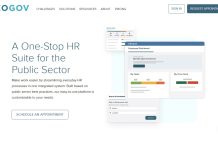It’s important to choose the right business intelligence (BI) tool for your organization, but it’s also hard to find an accurate analysis of the top choices. It can be informative to see what each company says about their own BI tools, but they’re obviously going to be biased. Online reviews can be helpful, but they’re often sponsored, which means they’re biased as well. What you need is a head-to-head BI tools analysis of the top contenders; that way you can compare all the pros and cons at once, and see which one would be the best fit for your company.
A good place to start would be Gartner’s latest Magic Quadrant Business Intelligence Report, which is published annually. Since they perform evaluations based on specific criteria instead of the fact that they’re being paid for a good review, they’re a trustworthy source of information if you want to compare various BI tools. The report includes a mix of business intelligence and analytics vendors; 2022’s edition has 42 pages of in-depth analysis for these vendors, as well as information on current marketplace trends.
The report is packed with data; you’d need quite a while to read through all 42 pages. If you wanted an overview instead, you could look at the graph that rates vendors according to how they perform on two different criteria. The first criterion is “Completeness of Vision”, which includes product strategy, market understanding, and innovation. The second is “Ability to Execute”, which includes company viability, pricing, product capabilities, and customer experience. Vendors are sorted into categories of Leaders, Challengers, Visionaries, and Niche Players. There isn’t a clear-cut hierarchy of “best” or “worst”, but the Leaders are considered to be the top vendors, while the Niche Players only offer features that appeal to a much smaller group.
Features included in top BI tools
If you want to find the best of the best, you could start with the three BI tools that Gartner’s report identified as “Leaders”. Not only do these tools offer the most complete array of features, but they’re also dedicated to improving as they see the need for changes. Here are the primary features they offer:
Managing Data
- A flexible cloud strategy – A mistake that some organizations make is to choose a BI tool that doesn’t give them the option to adjust their cloud strategy in the future. If you pick a BI tool that lets you use multiple-cloud storage, you won’t be locking yourself into a data storage solution that could become inadequate as the organization grows.
- Governed self-service – Data corruption is a real risk when dozens to hundreds of people are accessing the data. In order to preserve data integrity, a BI tool should allow you to control permissions for each user; this lets them access what they need, while lowering the risk of corrupted data.
- Data integration – This feature lets users quickly access data sources, without having to use additional products or write custom code.
- Scalability – Some BI tools have limits for the number of users, or other restrictions that would prevent your organization from getting the most use out of the tool. The best BI tools offer scalability, which ensures that the tool will be able to accommodate the growth of your company far into the future.
Ease of Use
- A single interface – Whether you’re exploring data sets or generating reports, you should have a uniform user experience.
- Data literacy – A user-friendly interface and natural-sounding language makes the BI tool more accessible for users of all skill levels.
- Embedded analytics – Using data visualizations, real-time reports, interactive dashboards, and analytical capabilities, the BI tool should bring relevant data to stakeholders regardless of which part of the tool they’re using.
Analysis
- Augmented analytics – Using machine learning, data quality and data profiling are enhanced. Users can receive alerts when changes in data are detected, such as anomalies or outliers. They can also detect variances, correlations, trends, and associations without having to explore all the data themselves.
- Interactive dashboards – Real-time data is brought to the stakeholders without the need for generating reports or exploring huge data sets. No matter the size or complexity of the data set, users can engage with the data, generate custom reports, see performance overviews, and more.
- Mobile compatibility – In order to maximize the use that stakeholders can get out of a BI tool, you should choose one that offers a fully functional mobile experience.
- Data visualization – The best BI tools offer more than simple pie charts or bar graphs for data visualization; they include a wide variety of visualizations that can accommodate all kinds of complex data sets. This helps users understand the data at a glance, instead of having to explore each new data set on their own.
What to consider when looking for a business intelligence tool
- Look for a BI tool that delivers active as well as passive data. Active data is what you can view in real time, and passive data comes in the form of reports that detail what’s already happened. Established analytics pipelines let your organization access data as soon as it’s available.
- The TCO (total cost of ownership) could be a lot more than just the cost of the BI tool. Make sure you account for other potential expenses, such as the set-up, additional hardware, increasing data volume, or administration costs.
- Data analytics capabilities are key, but they aren’t the only thing you should consider. There are many other capabilities offered by BI tools, and they should have an influence on your decision too.
- Data integration transforms, catalogs, and combines raw data from multiple sources into a cohesive whole, but it isn’t offered by every BI tool. Without this capability, data quality would be much lower.
The takeaway
When considering the features offered by a BI tool, there are two main questions to ask. First, are they the best features compared to the top vendors? Second, would they help your organization move forward? If you keep these questions in mind, you should have an easier time making the right decision for your organization.



